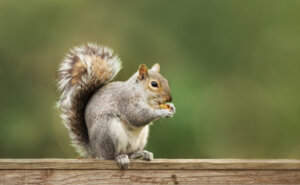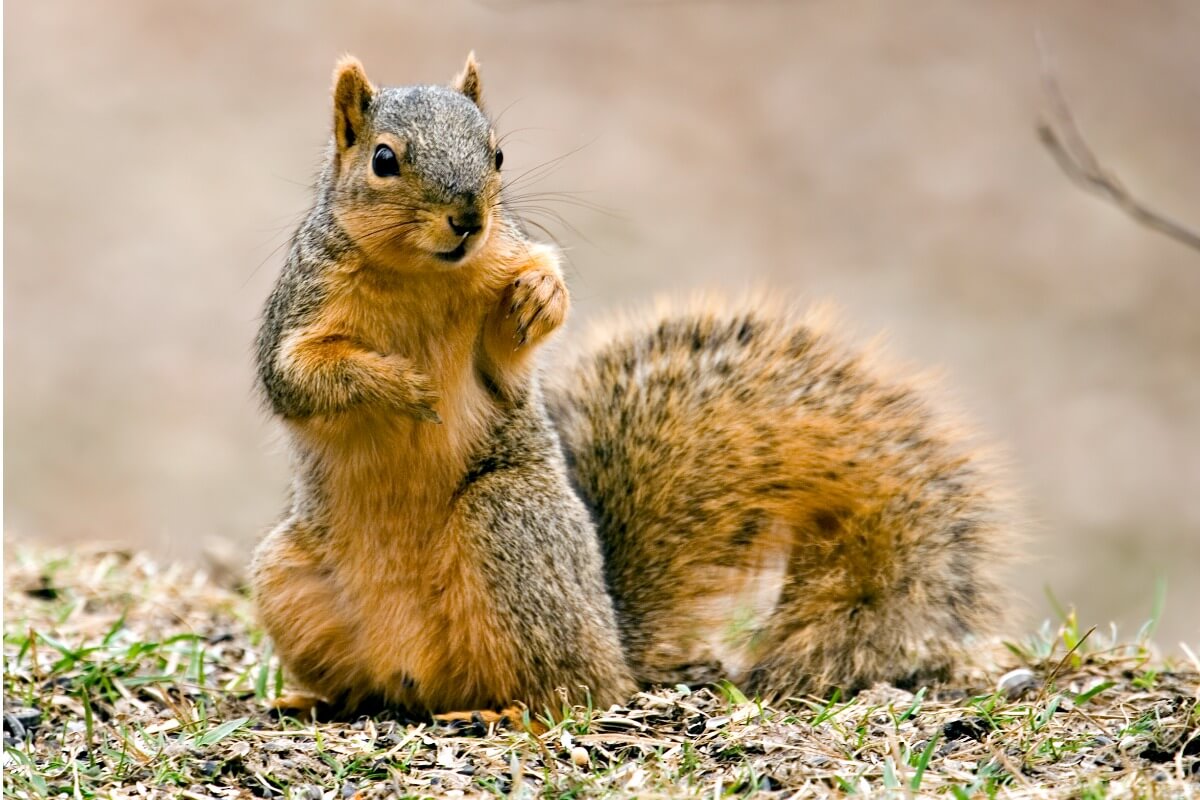Squirrel Hibernation and Its Contribution to Space Travel


Written and verified by the psychologist Sara González Juárez
Hibernation is one of those animal capabilities that most fascinate humans, and it isn’t just because they can spend months sleeping. In fact, recent discoveries about squirrel hibernation suggest important applications in the field of space travel.
Since this “deactivation” process serves crucial functions for survival and contains complex processes, here you’ll find an informative review about it. In addition, you’ll learn why the question “What do squirrels have to do with going into space?” isn’t a joke. Let’s begin.
How is squirrel hibernation possible?

When it comes to studying animal hibernation, the most surprising thing is not that they can sleep for months at a time. In fact, what fascinates scientists most is that this period has no serious effects on the animal’s organism. Even if it wakes up thin and hungry, it doesn’t suffer from malnutrition, nor incapacitating loss of muscle mass, among other wonders.
Hibernation, in fact, is a defense mechanism to survive periods where climatic conditions become extreme without having to migrate. It isn’t something voluntary, nor is it about sleeping; it’s a response to external conditions that consist of 2 main phases.
In the first phase, the animal overfeeds to gain muscle mass and fat. Once they fall into a state of unconsciousness, several changes take place in the animal’s body:
- Decreased heart rate: The heart of a hibernating bear, for example, can beat 5 times per minute without it dying.
- Decrease in the metabolic rate: Because of this decrease in the frequency of heartbeats, the body decreases the body’s need for oxygen, in order to adapt it and not suffer problems.
- Conversion of urea into nitrogenous forms: Urea intoxicates the body if it isn’t eliminated through urine, but animals don’t wake up from hibernation to urinate and defecate. This recycling of urea prevents intoxication while creating usable substances for survival, such as proteins.
- Decreased degradation of muscle proteins: When the animals wake up from hibernation, they haven’t lost much muscle mass through inactivity thanks to this process.
- The formation and renewal of bone cells is intensified: In this way the bones are kept safe from osteoporosis and other pathologies typical of inactivity and slowed metabolism.
- Decrease in body temperature: Believe it or not, the animal’s body temperature doesn’t drop too much, just a couple of degrees. This remains a mystery to science.
How do squirrels hibernate?
There are many species that hibernate and each of them presents particularities in terms of this process. In the case of ground squirrels (genus Spermophilus), a study (Spanish link) found that the key to their maintenance throughout the months of lethargy was in the energy consumption of fat reserves. Despite having food available, during the period of torpor, they do not usually consume it.
Despite reactivating months later, the muscle mass and function of squirrels remain intact.
This mystery brings back a theory formulated in the 1980s and contemplated in one of the points of the previous list – the rescue of urea hydrogen. As stated, urea intoxicates the body if it isn’t evacuated, so the body of the hibernating animal uses it for muscle maintenance.
The authors of the study found that urea travels from the blood to the intestine, where the squirrel’s intestinal flora breaks it down into nitrogen and carbon. This urea nitrogen is the molecule involved in building muscle tissue during hibernation, hence there’s almost no loss of mass.
How does this apply to space travel?

This discovery is groundbreaking and opens up several avenues in its application in science. Since the body biome can manufacture nitrogen to maintain healthy muscles under extreme conditions, important advances could be made in the treatment of dystrophies, both in humans and non-humans.
Microbes living in the human gut are also capable of recovering nitrogen from urea, but not to the same level as these animals.
On the other hand, astronauts often lose a large amount of muscle mass when they travel in space. This occurs because, in long-lasting microgravity conditions, protein synthesis decreases. However, this problem could be solved if the gut microbiota could be enhanced to include urea recycling.
Could you have imagined that knowing about squirrel hibernation could open the door to so many useful avenues for humans? It isn’t so much about the muscle loss of astronauts, but about finding an improvement in the quality of life of many people. From the muscular atrophy of aging to diseases such as sarcopenia, this revelation promises much.
Hibernation is one of those animal capabilities that most fascinate humans, and it isn’t just because they can spend months sleeping. In fact, recent discoveries about squirrel hibernation suggest important applications in the field of space travel.
Since this “deactivation” process serves crucial functions for survival and contains complex processes, here you’ll find an informative review about it. In addition, you’ll learn why the question “What do squirrels have to do with going into space?” isn’t a joke. Let’s begin.
How is squirrel hibernation possible?

When it comes to studying animal hibernation, the most surprising thing is not that they can sleep for months at a time. In fact, what fascinates scientists most is that this period has no serious effects on the animal’s organism. Even if it wakes up thin and hungry, it doesn’t suffer from malnutrition, nor incapacitating loss of muscle mass, among other wonders.
Hibernation, in fact, is a defense mechanism to survive periods where climatic conditions become extreme without having to migrate. It isn’t something voluntary, nor is it about sleeping; it’s a response to external conditions that consist of 2 main phases.
In the first phase, the animal overfeeds to gain muscle mass and fat. Once they fall into a state of unconsciousness, several changes take place in the animal’s body:
- Decreased heart rate: The heart of a hibernating bear, for example, can beat 5 times per minute without it dying.
- Decrease in the metabolic rate: Because of this decrease in the frequency of heartbeats, the body decreases the body’s need for oxygen, in order to adapt it and not suffer problems.
- Conversion of urea into nitrogenous forms: Urea intoxicates the body if it isn’t eliminated through urine, but animals don’t wake up from hibernation to urinate and defecate. This recycling of urea prevents intoxication while creating usable substances for survival, such as proteins.
- Decreased degradation of muscle proteins: When the animals wake up from hibernation, they haven’t lost much muscle mass through inactivity thanks to this process.
- The formation and renewal of bone cells is intensified: In this way the bones are kept safe from osteoporosis and other pathologies typical of inactivity and slowed metabolism.
- Decrease in body temperature: Believe it or not, the animal’s body temperature doesn’t drop too much, just a couple of degrees. This remains a mystery to science.
How do squirrels hibernate?
There are many species that hibernate and each of them presents particularities in terms of this process. In the case of ground squirrels (genus Spermophilus), a study (Spanish link) found that the key to their maintenance throughout the months of lethargy was in the energy consumption of fat reserves. Despite having food available, during the period of torpor, they do not usually consume it.
Despite reactivating months later, the muscle mass and function of squirrels remain intact.
This mystery brings back a theory formulated in the 1980s and contemplated in one of the points of the previous list – the rescue of urea hydrogen. As stated, urea intoxicates the body if it isn’t evacuated, so the body of the hibernating animal uses it for muscle maintenance.
The authors of the study found that urea travels from the blood to the intestine, where the squirrel’s intestinal flora breaks it down into nitrogen and carbon. This urea nitrogen is the molecule involved in building muscle tissue during hibernation, hence there’s almost no loss of mass.
How does this apply to space travel?

This discovery is groundbreaking and opens up several avenues in its application in science. Since the body biome can manufacture nitrogen to maintain healthy muscles under extreme conditions, important advances could be made in the treatment of dystrophies, both in humans and non-humans.
Microbes living in the human gut are also capable of recovering nitrogen from urea, but not to the same level as these animals.
On the other hand, astronauts often lose a large amount of muscle mass when they travel in space. This occurs because, in long-lasting microgravity conditions, protein synthesis decreases. However, this problem could be solved if the gut microbiota could be enhanced to include urea recycling.
Could you have imagined that knowing about squirrel hibernation could open the door to so many useful avenues for humans? It isn’t so much about the muscle loss of astronauts, but about finding an improvement in the quality of life of many people. From the muscular atrophy of aging to diseases such as sarcopenia, this revelation promises much.
All cited sources were thoroughly reviewed by our team to ensure their quality, reliability, currency, and validity. The bibliography of this article was considered reliable and of academic or scientific accuracy.
- Valdez, M., & Ceballos, G., (2005). PATRONES DE HIBERNACIÓN DE ARDILLAS DE TIERRA (SPERMOPHILUS MEXICANUS Y S. PEROTENSIS) EN EL CENTRO DE MÉXICO. https://www.researchgate.net/publication/267678827_PATRONES_DE_HIBERNACION_DE_ARDILLAS_DE_TIERRA_SPERMOPHILUS_MEXICANUS_Y_S_PEROTENSIS_EN_EL_CENTRO_DE_MEXICO
- Regan, M. D., Chiang, E., Liu, Y., Tonelli, M., Verdoorn, K. M., Gugel, S. R., … & Assadi-Porter, F. M. (2022). Nitrogen recycling via gut symbionts increases in ground squirrels over the hibernation season. Science, 375(6579), 460-463.
This text is provided for informational purposes only and does not replace consultation with a professional. If in doubt, consult your specialist.








